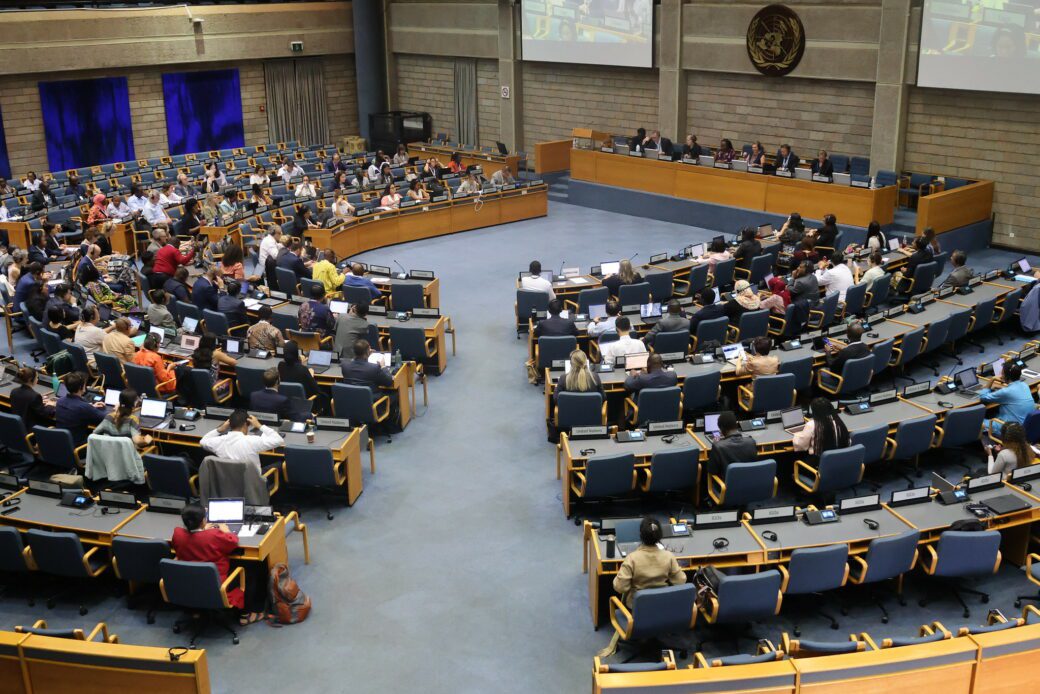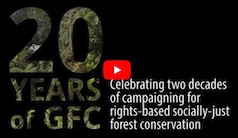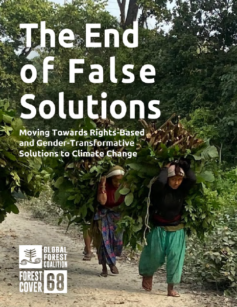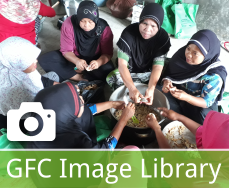Closing Gender Gaps in Biodiversity Conservation Demands Robust Indicators
By Valentina Figuera Martinez, Gender Justice and Forests Campaign Coordinator, Global Forest Coalition
The last trimester of 2023 brought important international developments in the conservation of forests, ecosystems, and biodiversity, and their intersection with gender justice.
Almost one year after the adoption of the Kunming-Montreal Global Biodiversity Framework (KMGBF), negotiators met to discuss its implementation at the 25th Meeting of the Subsidiary Body on Scientific, Technical, and Technological Advice (SBSTTA 25) in Nairobi from 15–19 October. This was a pivotal moment in determining the practical way forward, identifying challenges, and developing future actions to support the implementation of the framework.
The Kunming-Montreal Global Biodiversity Framework (KMGBF) was a historic agreement for gender justice
The negotiations in Nairobi
The meeting addressed several aspects of the implementation of the Global Biodiversity Framework from a scientific, technical, and technological perspective, including the monitoring framework, biodiversity and climate change, invasive alien species, and sustainable wildlife management.

Plenary meeting of Intergovernmental Consultations on Nature-based Solutions, Nairobi, Kenya, 12 October 2023, ©UNEP Attribution-NonCommercial-ShareAlike (CC BY-NC-SA 2.0)
Other agenda items included mechanisms for planning, monitoring, reporting, and review, and the Sixth Assessment Report of the Intergovernmental Panel on Climate Change (IPCC AR6) on KMGBF implementation.
The meeting was preceded by a final round of Intergovernmental Consultations on Nature-based Solutions (NbS) hosted by the United Nations Environment Programme (UNEP). The outcomes of this global consultation were not negotiated; there is no multilaterally-agreed document, but rather a ‘Co-chairs summary’ that fails to address in a balanced manner all the divergences expressed by member states, civil society organisations, and stakeholders during the meeting. Some of the concerns include offsetting schemes, greenwashing practices, human rights violations, gender-differentiated impacts, and the reproduction of colonial models of control and use of land, forests, ecosystems, biodiversity, and livelihoods.
The importance of the Kunming-Montreal Global Biodiversity Framework
The Kunming-Montreal Global Biodiversity Framework (KMGBF) was a historic agreement for gender justice not only because it recognizes the need to have a human rights-based approach to biodiversity conservation, use, and benefit sharing but also because of the adoption of targets 22 and 23 to support the gender-responsive implementation and ensure gender equality in the Global Biodiversity Framework.
In parallel, another important instrument to achieve women’s and girls’ empowerment is the Gender Plan of Action (GPA), which encourages parties and relevant organisations to include gender-specific indicators and gender-disaggregated data in their national biodiversity reporting, as well as provide support for a national gender and biodiversity focal point for negotiations. This step would mean a starting point for more participatory negotiation processes.
Indicators for monitoring progress
The 15th Biodiversity COP, held in Montreal in December 2022, adopted a monitoring framework for the KMGBF, composed of ‘headline indicators,’ ‘global-level indicators,’ ‘component indicators,’ and ‘complementary indicators’, which serve as a tool for assessing progress and ensuring that parties uphold their commitments under the KMGBF.
Indicators help detect trends relevant to the components of the goals and targets of the framework, and headline indicators are set to be the most ambitious reporting methodology tool to track national, regional, and global progress on national biodiversity strategies and action plans. The headline indicators, which have been the subject of lengthy debates, are the pillars of the KMGBF’s implementation, serving as a comprehensive tool for assessing progress.
Global-level indicators, also known as ‘binary indicators’ since they are derived from binary reporting and collated from binary (yes/no) responses in national reports, will only demand countries to provide quantitative data – a count of the number of countries having undertaken specified activities – without any robust capture of the overall scope of the framework’s goals and targets.
Simplified reporting weakens indicators
All rightsholder CBD constituencies (including the Women’s Caucus, International Indigenous Forum on Biodiversity, and Global Youth Biodiversity Network), several civil society organisations, and stakeholders have been demanding the inclusion of headline indicators for all targets to ensure substantive reporting in national biodiversity strategies and action plans.
Nevertheless, during the negotiation process at SBSTTA 25, some parties called for “simplified” reporting to assess the state of progress. Tracking biodiversity outcomes with binary indicators through simplified “yes” or “no” answers will not be sufficient to measure biodiversity loss, human rights violations, and gender, social, racial, and intergenerational inequalities. Nor will it allow for robust monitoring progress in the implementation of the framework.
A majority “yes” response to whether a country has certain legislation supporting the KMGBF or a Gender Plan of Action (GPA) does not measure the effectiveness of such legislation nor adequate financial and technical resources to implement a GPA. Biodiversity and frontline communities engaged in conservation efforts are dynamic actors, and thus, identifying challenges and trends requires indicators that enable biodiversity and ecosystem management supported by effective strategies.
Targets 22 and 23 call for ensuring effective gender-responsive participation in decision-making and gender equality in the implementation of the framework, and both targets are included in the monitoring framework negotiated document. As one of the agenda items in SBSTTA 25, this text required a long negotiation process, with parties deliberating until midnight in Nairobi on the background on global indicators, methodologies for computing global indicators, and draft recommendations.
There is still a long way to go to ensure gender equality in the implementation of the Global Biodiversity Framework as we head to a new round of negotiations in 2024.
The way forward
Ensuring that headline indicators are included to track targets 22 and 23, along with gender-disaggregated data collection of all 21 other targets, must be the priority to address gender-biodiversity data gaps, in line with the Gender Plan of Action.
One of the inclusions in the monitoring framework document was the proposed binary indicator text for target 23: It now includes significant language on the allocation of financial resources to ensure that all women and girls have equal opportunities and capacity to contribute to the objectives of the convention, including by ensuring women’s equal rights and access to land and natural resources. The text also includes language to report on the number of countries with legal, administrative or policy frameworks, including the Gender Plan of Action, to ensure gender equality.
At the current state of the monitoring framework, having a comprehensive methodology through headline indicators for targets 22 and 23 (and even for all targets) is actually the right path to close the biodiversity gaps and ensure an effective and inclusive, gender-responsive implementation — specifically, one that considers the rights of Indigenous Peoples, women in all their diversity, youths, local and Afro-descendant communities.
There’s progress to be made in Nairobi in 2024
The negotiations on the monitoring framework will continue at SBSTTA 26 in 2024, once again in Nairobi. Developing a comprehensive methodology for headline indicators will be a significant challenge. The process takes time and expertise, so advocacy efforts to include a rights-based and gender-responsive approach (currently in bracketed text) must continue.
We need comprehensive reporting based on biodiversity data that also includes elements to integrate human rights and gender equality considerations into national biodiversity strategies and action plans. There is still a long way to go to ensure gender equality in the implementation of the Global Biodiversity Framework as we head to a new round of negotiations in 2024.











